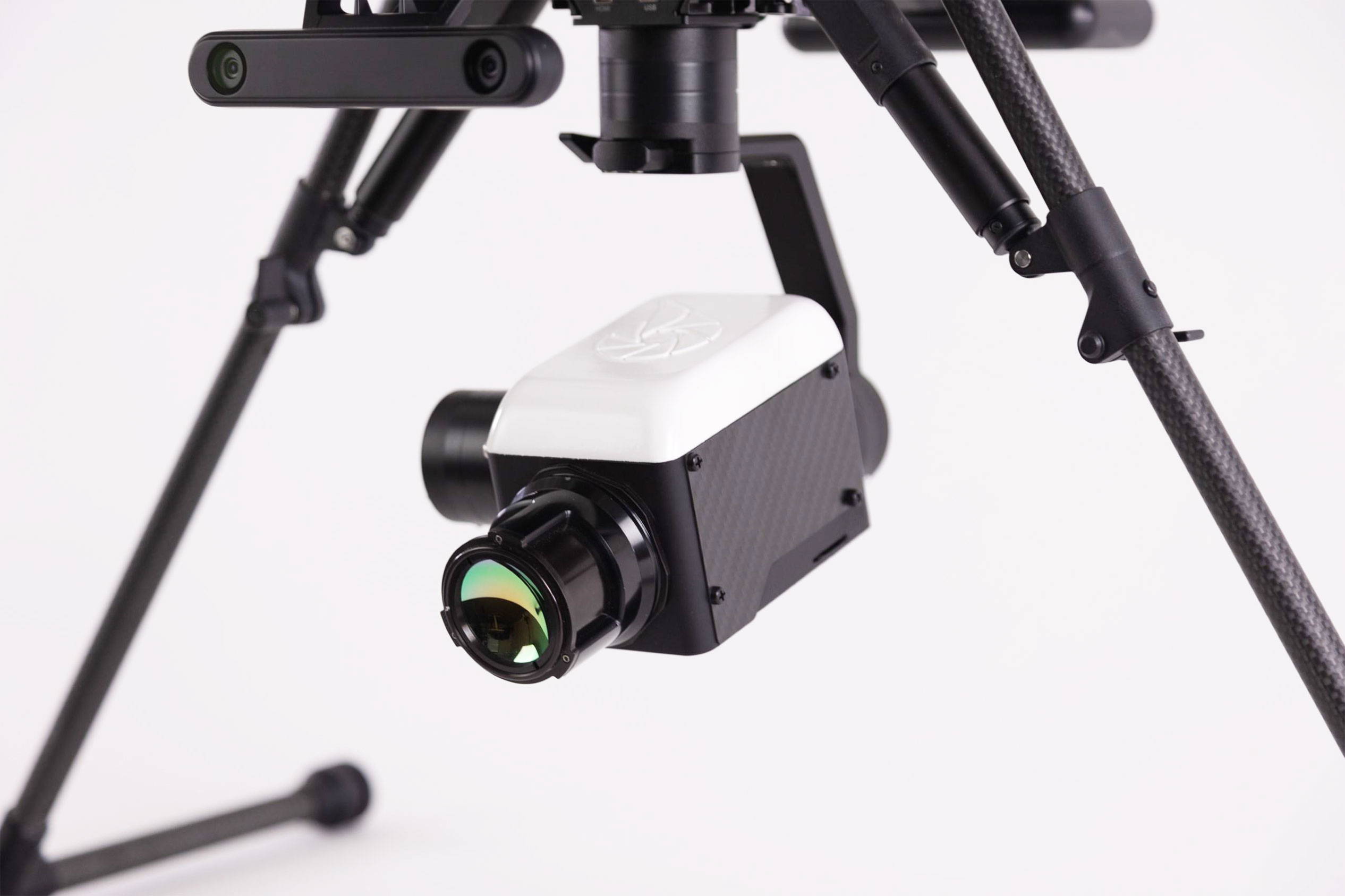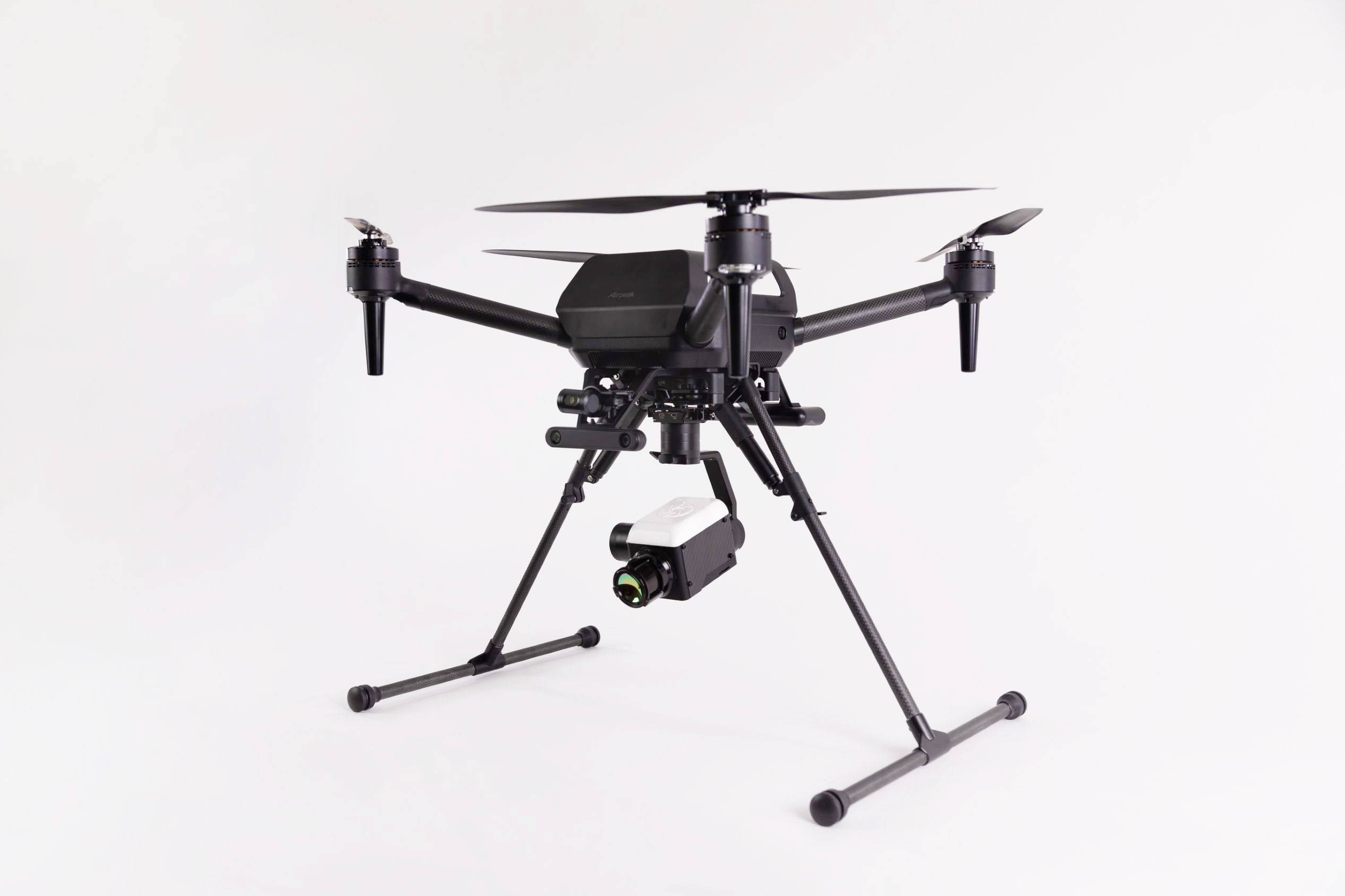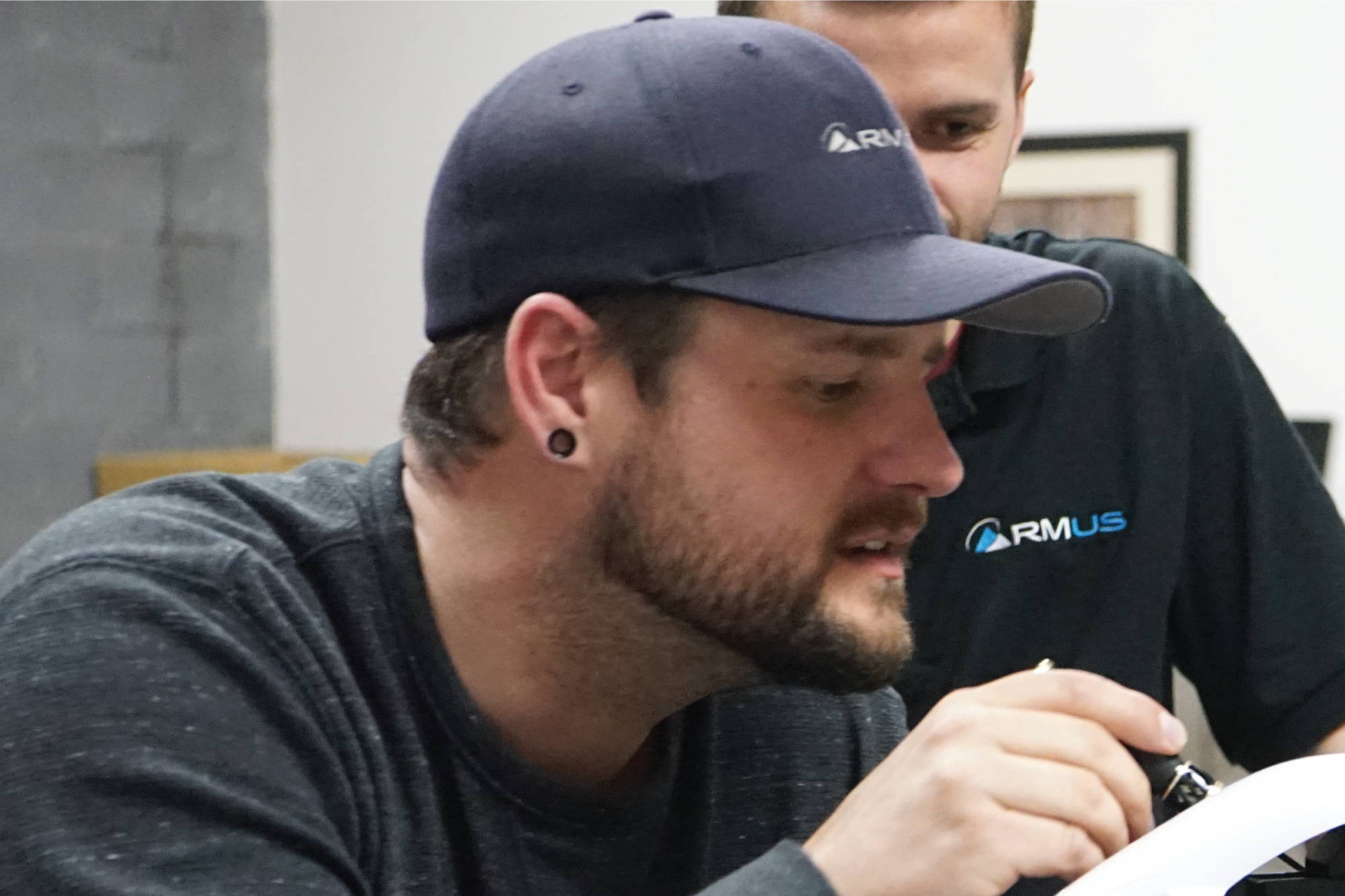The RMUS Optical Gas Imaging (OGI) package includes all the relevant hardware, software and accessories for professional-level inspection work. After vetting numerous UAS options, we selected the Sony Airpeak S1 Enterprise system for the drone platform of the package. With its high payload tolerance and NDAA complaint manufacturing, the Airpeak S1 Enterprise is an excellent platform for this application and is supported by Sony, one of the biggest names in electronics.
The RMUS OGI payload is the result of a combined effort between RMUS, Aerial Thermal Imaging and Sierra Olympia. Aerial Thermal Imaging provided the sensor integration and AerialOGI™ reporting software, so that the workflow is easy and the deliverables are automatically created for the client. This means you spend less time tinkering with software and more time on paying jobs. The Sierra Olympia Ventus OGI core is the sensor workhorse of this payload, providing high resolution imagery of potential leaks and other anomalies.
The RMUS OGI package includes all of the hardware, software and training so that you can get operational and booking jobs ASAP. We highly encourage you to call one of our Sales Reps at 800-739-8393 for any questions you may have.











